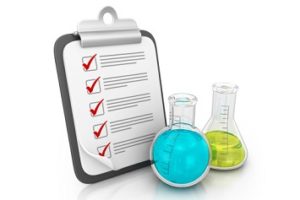The new year has just arrived, but March 1 will be here before you know it and, with it, the deadline for submitting your Tier II Hazardous Chemical Inventory reports. Much has stayed the same for Tier II reporting, but do you know what has changed on this year’s Tier II report?
The Basics Stay the Same
The why and the who of the Tier II report have stayed the same. Tier II reports, under the Emergency Planning and Community Right-to-Know Act (EPCRA), continue to be a valuable tool to inform State Emergency Response Commissions (SERCs), Local Emergency Planning Committees (LEPCs), local fire departments, and the public of the chemicals stored at specific facilities and the hazards those chemicals present. This information allows communities to be better prepared in the event of an emergency.
Facilities that used or stored hazardous chemicals above established thresholds at any time during 2017 must submit a Tier II report. Hazardous chemicals are any substances that require a facility to maintain a safety data sheet (SDS). The thresholds above which these chemicals must be reported remain:
- 500 pounds (lb) or the threshold planning quantity (TPQ), whichever is lower, for extremely hazardous substances listed in 40 CFR 355 Appendices A and B; or
- 10,000 lb for all other hazardous chemicals (with higher thresholds for gasoline and diesel fuel at retail gasoline stations).
The exemptions from Tier II reporting also remain unchanged from previous years.
Changes to Hazard Categories
As part of a Tier II inventory report, you must designate the physical or health hazards associated with each hazardous chemical. In the past, this meant choosing from just five options: (1) fire; (2) sudden release of pressure; (3) reactive; (4) immediate (acute); and (5) delayed (chronic). However, the U.S. Environmental Protection Agency (EPA) amended (and subsequently corrected) the hazardous chemical inventory reporting regulations to make the categories of physical and health hazards more consistent with those outlined under the Occupational Safety and Health Administration’s (OSHA) Hazard Communication Standard. As a result, on the Tier II report you submit by March 1, 2018, you now must choose from among 13 possible physical hazards and 11 possible health hazards.
| Physical Hazards | Health Hazards |
|
|
Section 2 of the SDS should help you determine which of these hazards are associated with a given chemical.
What to Do Now
The deadline for submitting a 2017 Tier II report is March 1, 2018. So, if you haven’t done so already, now is the time to start pulling together your Tier II report:
- Determine what chemicals you need to report.
- Determine what exemptions may apply to your facility.
- Compile all the necessary data to complete the Tier II reporting form, including the new hazard categories that apply to the chemicals at your facility.
- Make sure you know what method(s) of reporting you must use in your jurisdiction.
So get started determining what chemicals you need to report and compiling the data necessary to complete the report. Then find out how and where you need to submit your final Tier II report.

|
Join us on Monday, February 19, for BLR’s webinar, Tier II Reporting: Preparing for the Upcoming March 1, 2018 Deadline.
You will learn:
|

